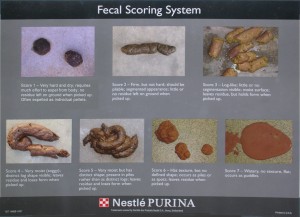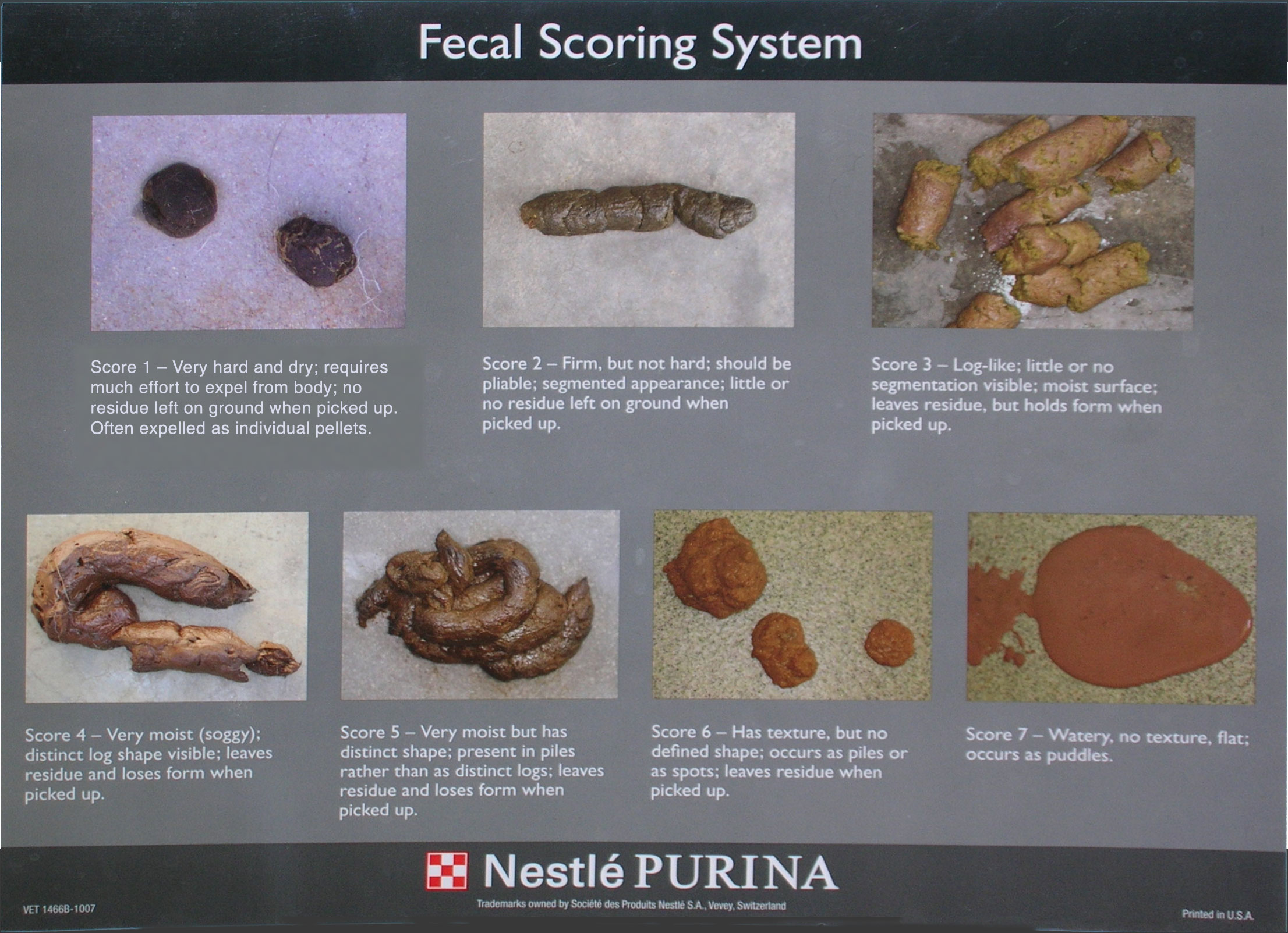There was so much response to my FB post about dog feces that I want to show you this scoring system, too. That’s right – there are scores that you can point to when conversing with the vet. In fact, I think it would make conversations easier if all vet offices provided this. Purina’s made it easy. Now it’s up to vets and their clients to use it.
Dogs with GI problems are more likely to produce # 4 – #7 prior to the condition being under control, but eating something (food that doesn’t agree with the dog, leaves, and whatever else dogs gobble down without the owner noticing) can cause this as well.
The difference is that these stools tend to firm up and get back to normal in healthy dogs whereas dogs with active GI trouble can take longer to be turned around.
Sample #3 is normal for many dogs. It may not be perfect, but a lot of this depends on gut bacteria (friend and foe) and the fat/fiber content of the diet.
Sample #2 may look perfect, but you’d be surprised at the number of dogs who produce these tootsie rolls, yet have a hard time passing them. In some cases, we see pieces of tootsie roll rather than the exact example shown.
Sample #1 is from a constipated dog. Although some owners celebrate the small stool, they’re not indicative of a healthy, robust GI tract. In most cases, dietary modifications can help tremendously. Pulverized green veggies can be a charm.

